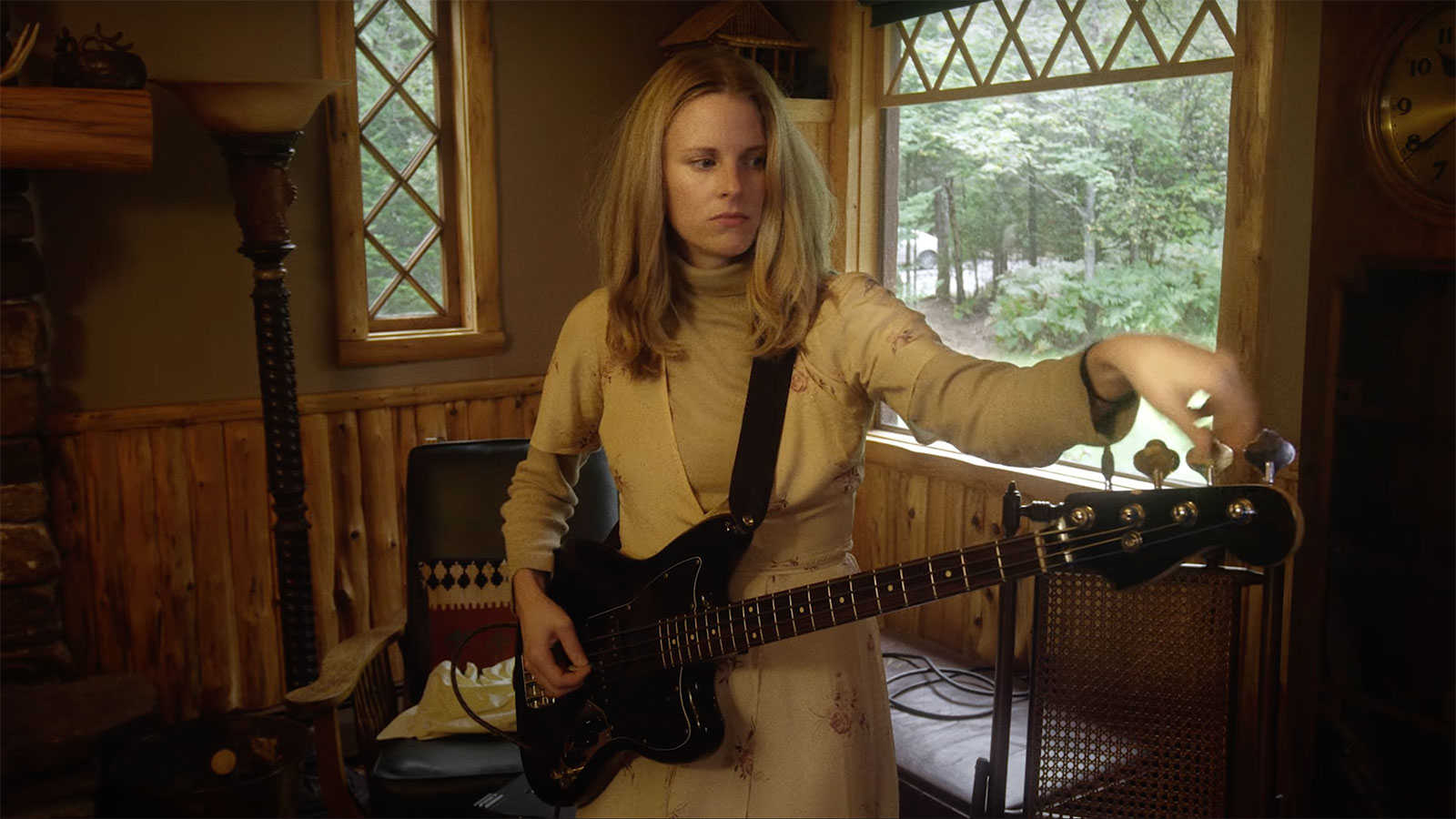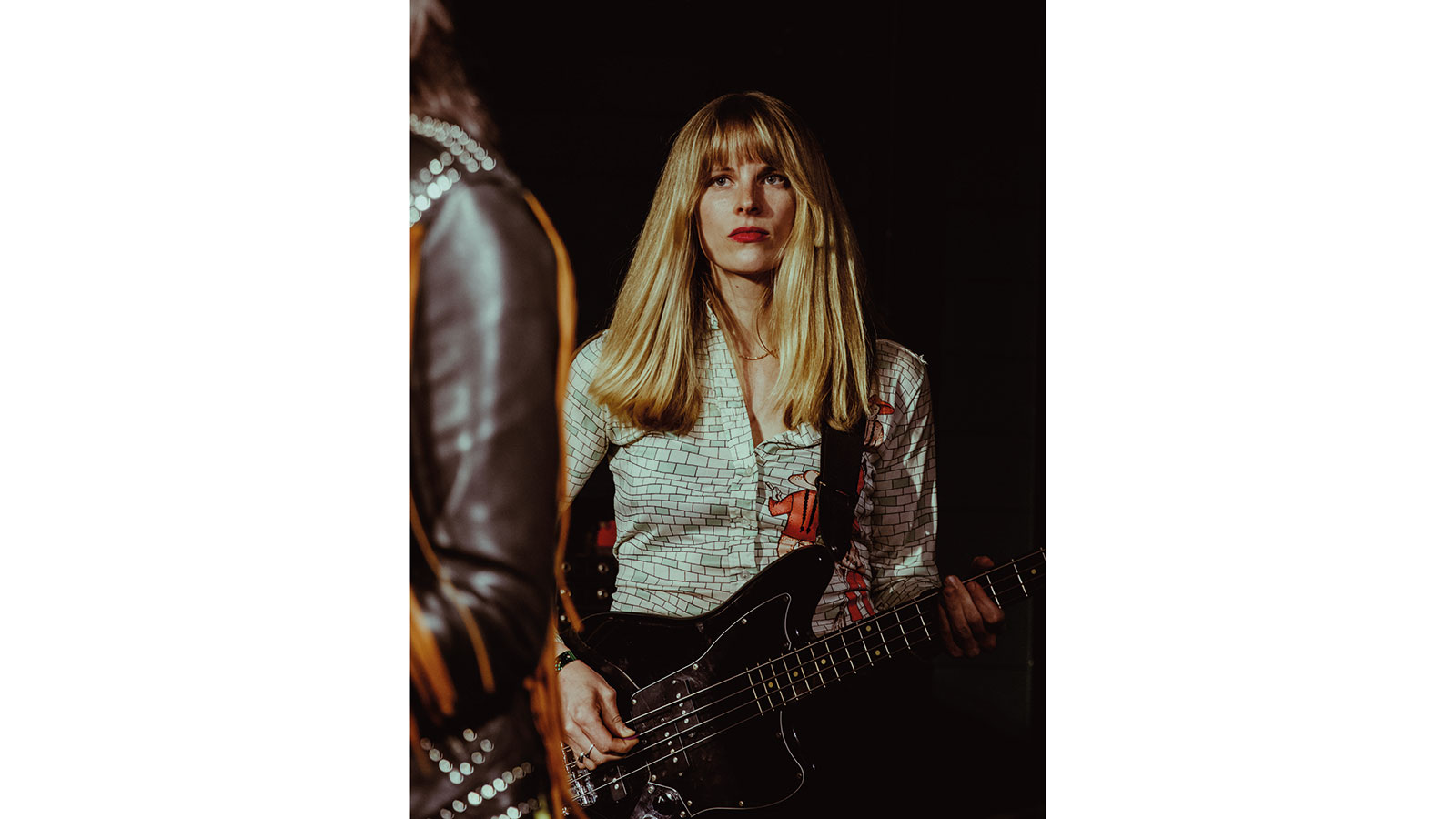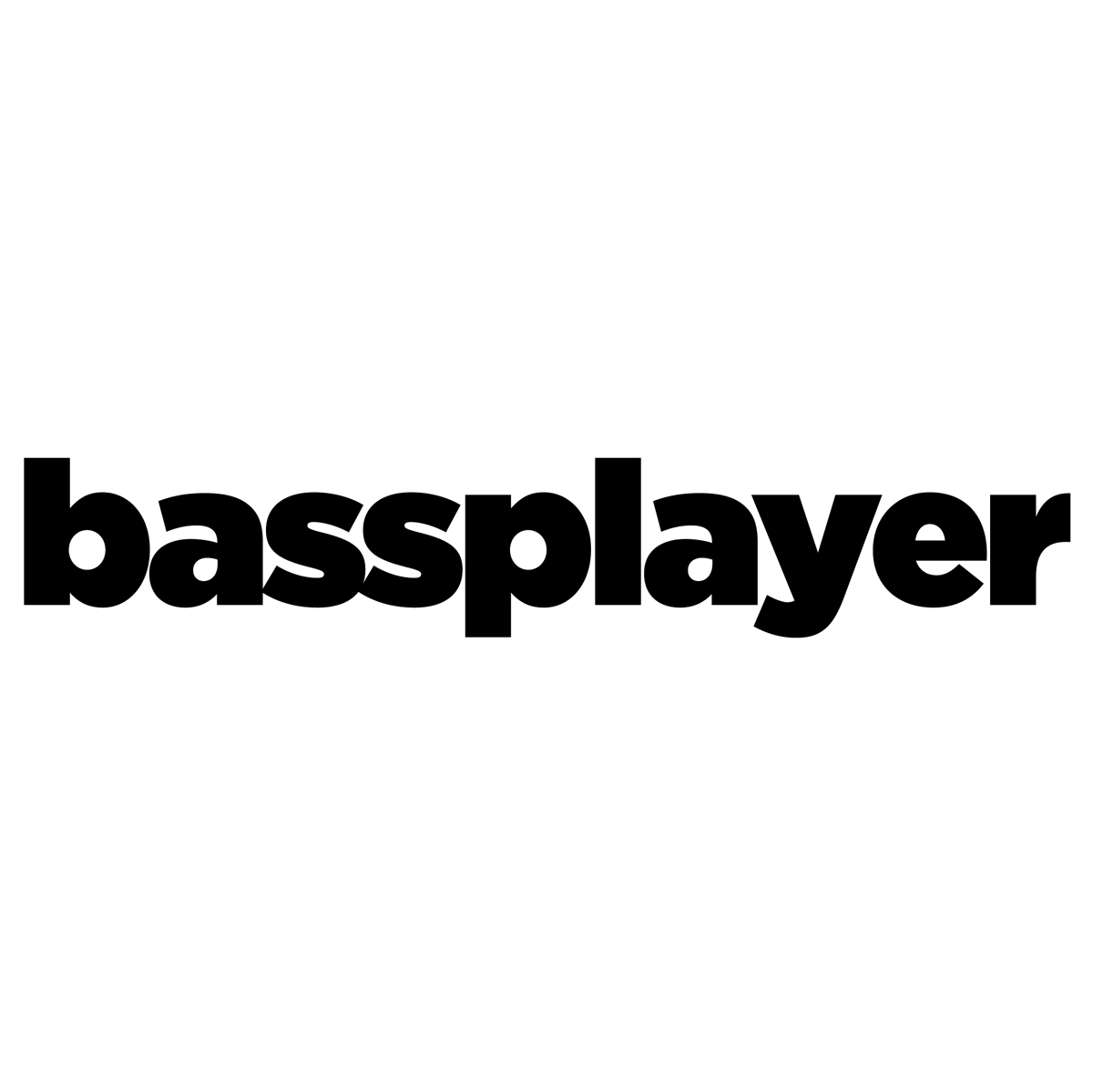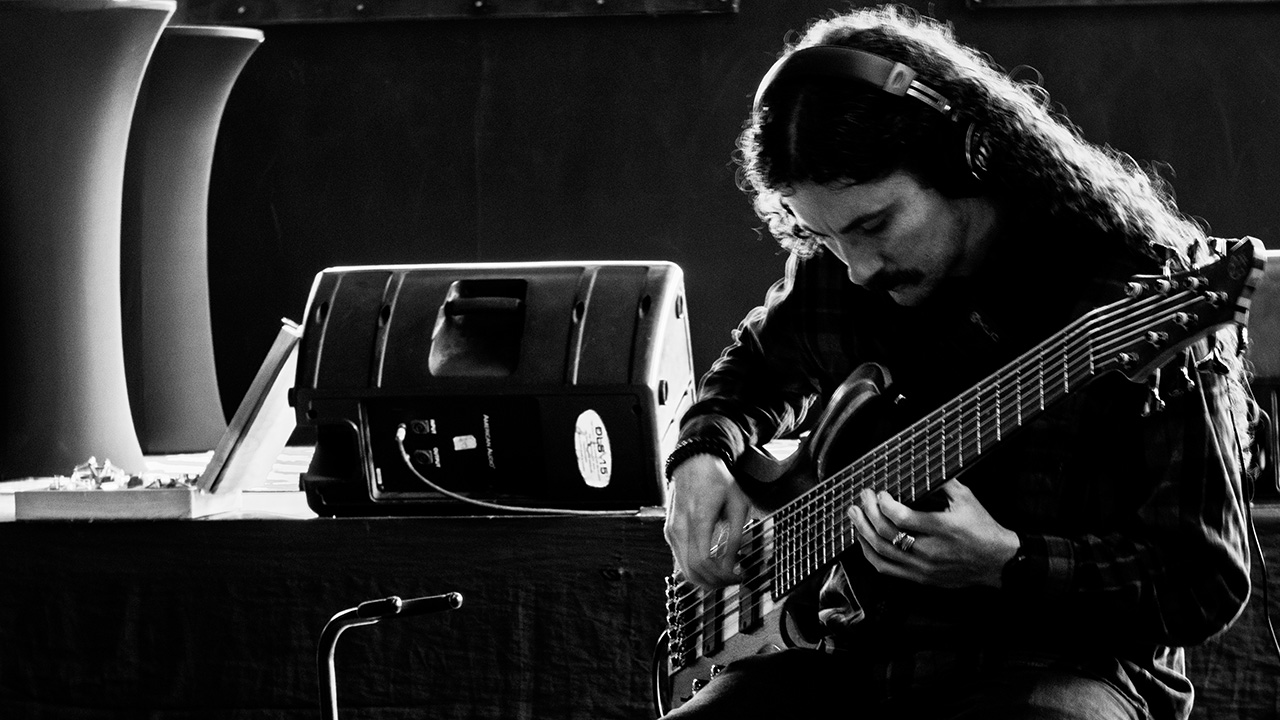Gustaf’s Tine Hill: “Bass is one of those instruments that chooses you”
Never give up the hunt for the perfect tones says the bassist with the Brooklyn art-punks

Brooklyn art-punks Gustaf have paid their dues, channelling more energy and time into their debut album, Audio Drag For Ego Slobs – its title adapted from a quote by singer Laurie Anderson – than most bands ever do.
The quintet, formed of singer Lydia Gammill, guitarist Vram Kherlopian, bassist Tine Hill, vocalist/percussionist Tarra Thiessen and drummer Melissa Lucciola, recorded the album no fewer than six times before landing on the right vibe.
“We just couldn’t find the right fit,” explains Hill, “but once Covid happened, we were all able to sit down and breathe and find somebody to work with us. I think we used that time wisely, trying to find our sound. It was the perfect time to do it.”
Then again, Gustaf are no strangers to ripping it all up and starting again, she adds.
“We played the songs so many times that when we got a residency in 2020 at Baby’s Alright, the club in New York, Lydia said ‘Okay, we’re axing the old songs and we’re gonna write all new ones. So we went to our shipping container practice space – yes, it’s very ironic and hipster! – and we just practised and played songs for hours. That way, we wrote a brand new setlist.”
The bass is up front and central on the new album, we note. “Yeah, it’s very bass-driven. We’re always figuring out which bass to use. I used my Fender Jaguar, and Lydia has this amazing 1970s Musicmaster bass that I love to play.
“But I’ve been through a few different basses: my first one was an Ibanez that I borrowed from a friend of a friend, but I left it in the back of a taxi: we forgot to take it off the back seat. I called every New York City cab service, asking them, ‘Hey, did you find my bass?’
All the latest guitar news, interviews, lessons, reviews, deals and more, direct to your inbox!
“The next bass after that was a Yamaha. I used to be in this band called Thick, and the singer lost another one of my basses, so I ended up going to Guitar Center and getting the cheapest bass they had. I played the Yamaha for a little bit, but then I sold that on Craigslist and bought my short-scale Jaguar, which is my favourite. It’s definitely the most fun to play.”
How about alternate gear or techniques? “Well, I never tried a five- or a six-string bass,” she tells us. “Maybe I will, though. Kim Gordon of Sonic Youth used to do different things to get out of the box. She used to tune differently, using G G D D, for example.
“I was thinking that maybe on our next album, we could do some experiments like that – but you won’t see me doing any slapping. I was watching this documentary on Steely Dan. Chuck Rainey played bass on their Amnesia album, and it was so funny. Donald Fagen told Chuck, ‘Don’t slap the bass. Everyone is doing that right now, so don’t do it,” and Chuck literally turned away and started slapping it.”

Still, band life is all about compromise – and in Gustaf’s case, that applies as much to the bass gear as it does everywhere else.
“I actually started using a pedalboard on this last tour,” says Hill, “even though I was actually not going to use any pedals. I told the band, ‘No, that’s not my style,’ but they persuaded me into it. They were like, ‘You need to have pedals!’ so I said ‘Okay, fine...’
“When it comes to amps, though, I can’t wait for the day that there are people setting them up for me. I mean, carrying them around is a good workout – but I’m ready to have someone do that for me now!”
A good bass player just has to have rhythm. If you don’t, you can’t play the bass. You just need to have that feeling
Hill’s journey into bass was a calling rather than a choice, she explains. “I never thought I would be a bass player because I always thought I wanted to play guitar, but it’s funny – bass is one of those instruments that chooses you. I started playing violin and flute in grade school and continued up to high school, and played those instruments a little bit in college, but when I moved to New York City, I wanted to start a band with a friend. She played guitar, so of course, I picked up the bass.”
She continues: “I admired Tina Weymouth from Talking Heads, and I really loved ‘Duck’ Dunn’s playing. I don’t know if you ever visited Stax Studio in Memphis? I love visiting there. It’s such a cool, gritty, rock’n’roll town. When I went to Stax it really changed my life because it brought so many people together. Duck Dunn played for so many people.”
Vintage bass players stand alongside modern musicians when it comes to Hill’s influences, she says. “Do you know what’s funny?” she admits. “I really enjoy YouTube bass players. My favourite YouTuber is a Japanese bass player called Mina – her playing is insane – and there’s another girl whose channel is called Julia Plays Groove, and she does a bunch of covers.
“I guess they’re more funk bassists, whereas I grew up on emo and pop-punk. It doesn’t matter, though: to me, a good bass player just has to have rhythm. If you don’t, you can’t play the bass. You just need to have that feeling.”
- Audio Drag For Ego Slobs is out now on Royal Mountain Records. For tour dates and more info, head to Gustaf’s site.
Bass Player is the world’s most comprehensive, trusted and insightful bass publication for passionate bassists and active musicians of all ages. Whatever your ability, BP has the interviews, reviews and lessons that will make you a better bass player. We go behind the scenes with bass manufacturers, ask a stellar crew of bass players for their advice, and bring you insights into pretty much every style of bass playing that exists, from reggae to jazz to metal and beyond. The gear we review ranges from the affordable to the upmarket and we maximise the opportunity to evolve our playing with the best teachers on the planet.

